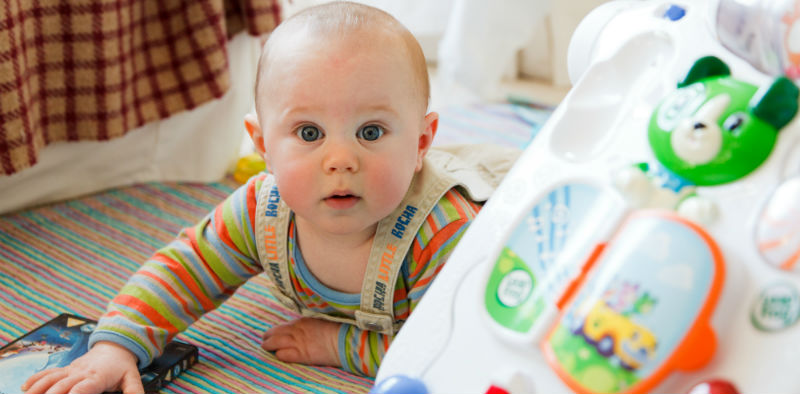Editor’s Note: This post was written by Maia Thomas, a student in the University of Washington Executive Master of Public Health program.
New research over the last several years is beginning to create a scientific consensus: America’s thirty-year love affair with toxic flame retardants has left a disturbing legacy that threatens our children’s brain development. Here is a summary of recent research along with steps you can take to protect your child.
It Seemed Like A Good Idea At The Time
Toxic flame retardants are all around us. Beginning in the 1970s, PBDE-type flame retardants were added to many of our everyday household products. Studies show PBDEs escape from consumer products and into household dust, water, food, and our bodies. Because they break down slowly, they stay in our homes and environment a long time, exposing us even though they have largely been phased out.
What Science Says
Increasingly, scientists are linking PBDE exposure to harmful effects on the developing brain. With each new study, a clearer picture emerges of how these compounds interfere with children’s ability to develop to their full potential.
- University of Cincinnati researchers found children with higher prenatal exposures had lower IQ and increased hyperactivity.
- At UC Berkley, researchers found higher prenatal and childhood exposures linked to lower IQ, poor attention, and slower motor development.
- Researchers at Columbia University uncovered similar findings for children exposed to PBDEs prenatally.
Out With The Old, In With The New
While the strongest evidence of flame retardants harm to brain development comes from PBDEs, some current-use flame retardants also harm the nervous system. But when U.S. production of PBDEs was phased out, most companies simply substituted other flame retardants in their products. So as we are learning about the damage the use of PBDEs has done and may continue to do to kids’ development, we continue to be exposed to neurotoxic chemicals used as flame retardants in our homes.
What You Can Do
Although it’s unlikely that you can completely avoid toxic flame retardants, you can reduce exposure to toxic flame retardants by following these tips:
- Damp mop and damp dust frequently.
- Wash children’s toys and hands often, especially before eating.
- Invest in a well-sealed HEPA vacuum cleaner and use it often.
- Replace older foam furniture with new furniture tagged as having “no added flame retardants” (many furniture makers now label in this way to comply with new California requirements.)
- Call a local re-upholsterer and ask about foam cushion replacement. You can often replace foam for less than the cost of a new item.
- Ask your daycare provider what measures they’ve taken to eliminate the use of flame retardant foams in play and nap mats.
- If your child participates in gymnastics, seek a facility without an open foam pit or ask the owner whether the foam contains flame retardants.
- Tell your elected representatives to ban the use of unnecessary toxic flame retardants in consumer products.
Photo courtesy of Pixabay




